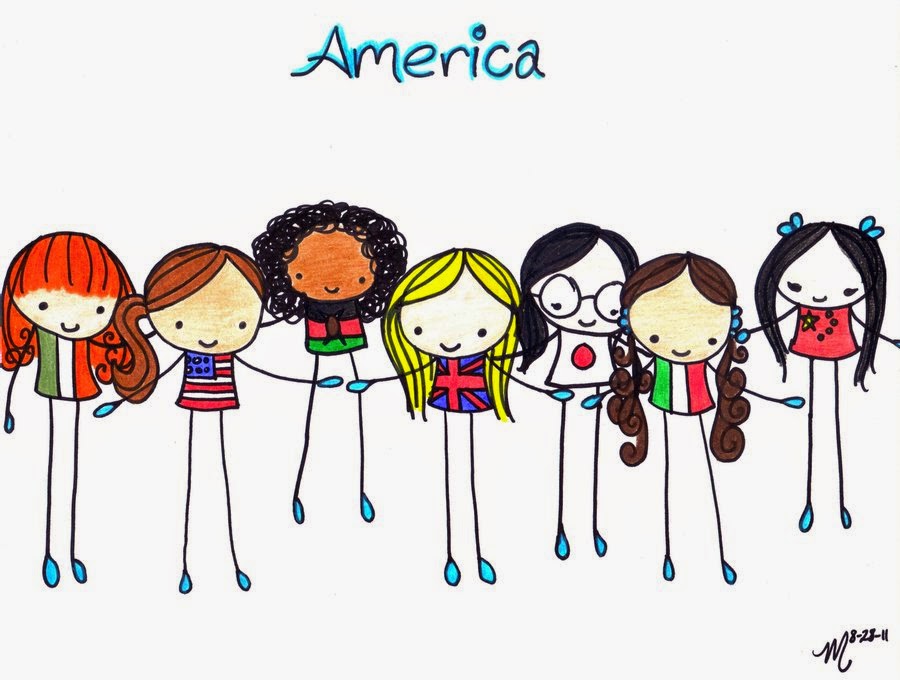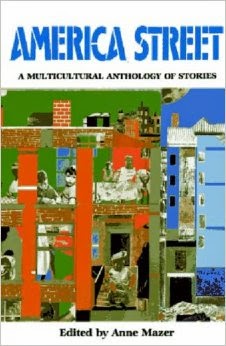As I stated in my first post about, Speak, I can really see this book leading to deep conversations within the classroom as well as outside of the educational setting. Even though kids want to talk about their feelings and thoughts they often feel awkward and embarrassed to do so. This book can connect them with each-other and with the content within the book: exclusion, victimization, alienation, and perseverance. Being a teenager isn't always easy and life isn't always perfect. Speak creates a safe environment for the student to identify with the protagonist on various levels. You don't need to have been assaulted (sexual or otherwise) to feel helpless, abandoned, or confused. All and all I really enjoyed this book and would definitely share it would my future students.
A place to blog about my mundane life as a 41 year old college student while fulfilling my obligation to complete the assignments given by Prof. McEntarfer for my ENED 250-01 Literacy and Technology (Fall 2014) class.
Sunday, November 30, 2014
Post #2 for Speak by Laurie Halse Anderson
What a tear inducing book! I appreciated the way the author skillfully pulled us, the reader, into Melinda's head. The author used emotion to bridge our connection with the protagonist, Melinda. As the young girl attempted to work through the moment her innocence was lost- my heart broke for her.Also, I felt horrible for her parents. As a parent myself I can't even fathom something as devastating as a rape happening to my child- my baby. The daily business of making a life for our family doesn't always make it possible to truly "be there" for them. The routine interactions within a family becomes just that, routine. Everyone knows their place and what is expected of them. The routine craziness of life doesn't always make it easy to be as attuned to our child as we should be.
Google Goodness!
I'm not sure where on the list of my overdue blog posts this would fit into BUT I must give a HUGE shout-out to everything Google. I've been without my Chromebook for the past week and I've felt unattached and lost without it. I depend on my laptop for everything: homework, research, correspondence with very important people (really it's just my dad), and crock-pot recipes. The later really has nothing to do with school but it does provide me nourishment which feeds my brain. :) When my 3 month old Chromebook "baby" died I immediately went in to PANIC MODE. "What about all the documents I had saved on there for school?!" I was sick to my stomach and ready to abandon all hope of being able to finish this semester. All these thoughts and more swirled within my manic brain and did so within a millisecond before I recalled the power of Google Drive.
Lucky for me, I had saved my homework (and much more) to Google Drive prior to my computer crashing.There are so many pro's to entrusting Google with all my media: photos, videos, music, documents, and more. In this situation it would be Google Drive that would come to my rescue and save the day. Retrieving my data was simple, all I had to do was log into my Google Drive account and "Voila!" I was back up and running. Everything that I had feared was gone, never to be seen again was neatly stored within the confines of my Google Drive.
According to the Google Drive website Drive allows you to:
Lucky for me, I had saved my homework (and much more) to Google Drive prior to my computer crashing.There are so many pro's to entrusting Google with all my media: photos, videos, music, documents, and more. In this situation it would be Google Drive that would come to my rescue and save the day. Retrieving my data was simple, all I had to do was log into my Google Drive account and "Voila!" I was back up and running. Everything that I had feared was gone, never to be seen again was neatly stored within the confines of my Google Drive.
According to the Google Drive website Drive allows you to:
- Store any file.
- Drive starts you with 15 GB of free Google storage, so you can keep pictures, stories, designs, drawings, recordings, videos – anything,
- See your stuff anywhere.
- Your files in Drive can be reached from any smartphone, tablet, or computer. So wherever you go, your files follow.
- Share files and folders.
- You can quickly invite others to view, download, and collaborate on all the files you want–no email attachment needed.
Saturday, November 29, 2014
Speak by Laurie Halse Anderson
I'm halfway through the book, Speak. I'm finding it easy to get in the mindset of the protagonist, Melinda Sordino. As she enters the ninth-grade she is full of feelings of alienation from her former friends and is finding it hard to connect with new ones. As I'm reading through the easy to ready chapters I'm drawn into her "story" and the secret she is carrying. I'm reminded of what a challenge high-school really can be for some kids and how we, as educators, aren't always privy to the interaction between them. I can really see this book leading to thought provoking discussions both inside and outside of the classroom setting. I'm looking forward to finishing the book and "shadowing" Melinda as she continues through her freshman year with so much on her mind.
Tuesday, November 4, 2014
Post #2 on America Street: A Multicultural Anthology of Stories Edited by Anne Mazer
I really enjoyed reading, "America Street: A Multicultural Anthology of Stories". This book would be extremely beneficial for the students who identify with any one of the diverse cultures represented within this anthology. This book would be extremely helpful for those students who may wish to learn more about their own heritage or even their neighbors culture but have yet to find a way to do so that was on a level that they could relate with on a personally level. They various cultures represented within the confines of this anthology are: Native, Asian, Latino, European, African, Arab and Jewish. There is a diversity in where they live as well as some tell stories of the country and others of the city. Many came to America from other countries but some where born in the States. The voices of the children in each short story is distinct to their culture and experience. It is the authentic voice within each of these that allow the reader to connect with the story.
My two personal favorite short stories are: "The Circuit" by Francisco Jimenez and "Thank You, M'am" by Langston Hughes. "The Circuit" tells the story of a Mexican migrant family and a little boy who longs to stay put instead of from traveling place to place in search of work. It describes the family's poor living conditions and their ability to make the best of what they had. The fine line of having to work to help support the family and yearning for an education weighs heavily on the young protagonist, and breaks your heart. This is opposite of the short story, "Thank You, M'am". This is a story of forgiveness, understanding, and educating. We are introduced to the young boy in this story as he is ripping an older woman's purse of her shoulder. In his youth he is naive and not at all prepared for the consequences of his actions. The older woman quickly takes control of the situation and begins her lesson. This story represents the best in us: forgiveness, understanding, and guidance.
As I stated in my previous post, this book would work well with many of the new literacies we have gone over in class as well as the ones that are being born every day. I would utilize the multicultural diversity within this book to near the beginning of the school year. I would create a lesson that would encourage the students to express themselves by identifying with one of the stories within the anthology. I would then have them utilize technology to create a project to be shared with the class.
Monday, November 3, 2014
America Street: A Multicultural Anthology of Stories Edited by Anne Mazer
The book I'm currently reading, "America Street: A Multicultural Anthology of Stories", consists of fourteen stories saturated with the colors and textures of "American" diversity. The stories are told about young people, some who were born in America and many who were not, some who are urban dwellers and some who find themselves harvesting a crop of cotton alongside their parents. Yet, in each short story it is easy to hear the authentic voice of a generation trying to find their identity amongst the landscape of America.
The short story format is quick and easy reading; I could totally see students associating themselves with the diversity within this anthology. This book could be easily tied in with many of the new literacy theories we have gone over in class thus far. It would be easy for a students to identify themselves in the stories and in turn tell their 'own story' in the form of a WeVideo project or a even creating a music video from song that exemplifies their heritage.
At the moment, I have a couple favorite stories that I've connected with on various levels, personal and otherwise, but I'm holding off sharing them until I have read the remainder of the anthology.
Subscribe to:
Posts (Atom)



